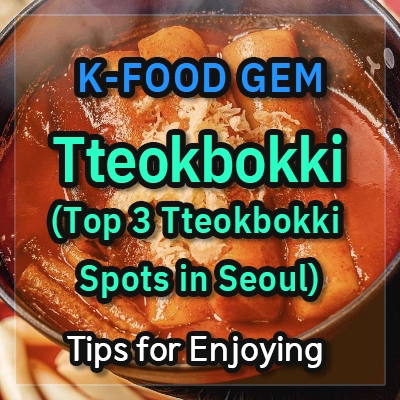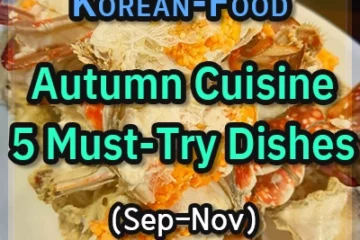Korean Spring Cuisine: 5 Must-Try Dishes (Mar-May) & Restaurant Recommendations
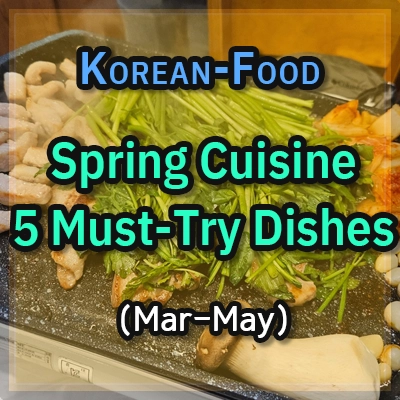
Korea’s four distinct seasons bring not only changing landscapes but a rich tapestry of seasonal foods. Connecting health with in-season produce, Korean cuisine celebrates the unique flavors of each time of year. For travelers, immersing in local specialties aligned with the season is an invitation to explore the essence of Korean culture.
In Korea, eating in-season isn’t just a culinary choice but a holistic approach to well-being. As you embark on a journey through this vibrant culinary landscape, consider this: savoring foods at their peak enhances not only flavor but also nutritional value.
Now, let’s delve into the heart of Korean spring cuisine by introducing five dishes that locals seek out, especially during the months of March, April, and May. If your travels align with these months, we highly recommend savoring these quintessential springtime delicacies for a doubly delightful culinary experience.
⭐ Must-Try Korean Spring Cuisine: 5 Delightful Dishes
1. Dalrae Doenjang Jjigae
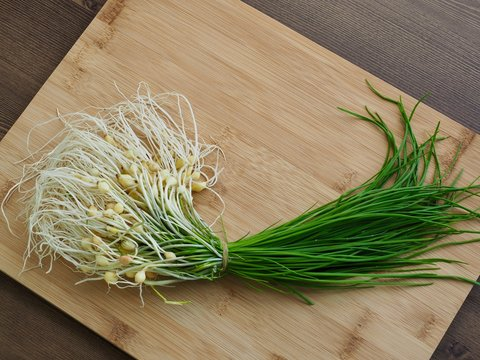
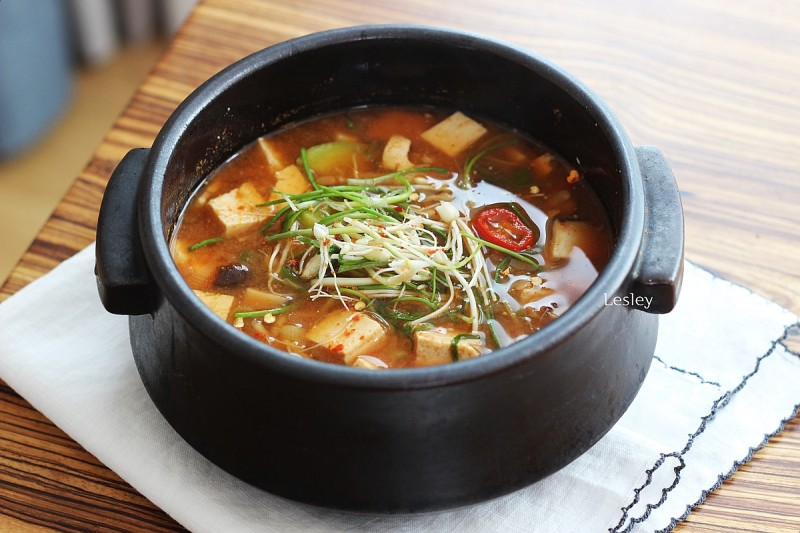
During the spring season in Korea, you can easily find the wild vegetable called ‘Dalrae’ at local markets. ‘Dalrae Doenjang Jjigae,’ a fermented soybean paste stew with wild vegetables, is a traditional Korean dish particularly favored during this time. The refreshing aroma of wild coriander combines harmoniously with the rich and savory flavor of the soybean paste, creating a robust and clean taste. The inclusion of wild vegetables adds both nutritional value and a delightful crunch to the dish, making it a perfect choice for a springtime meal.
2. Spring Greens Korean Set (Bomnamul Hanjeongsik)
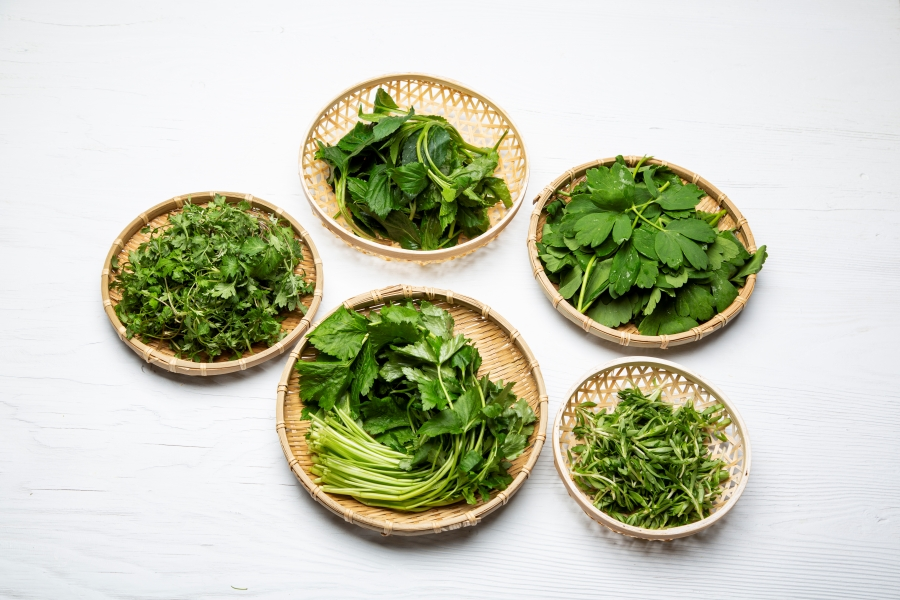
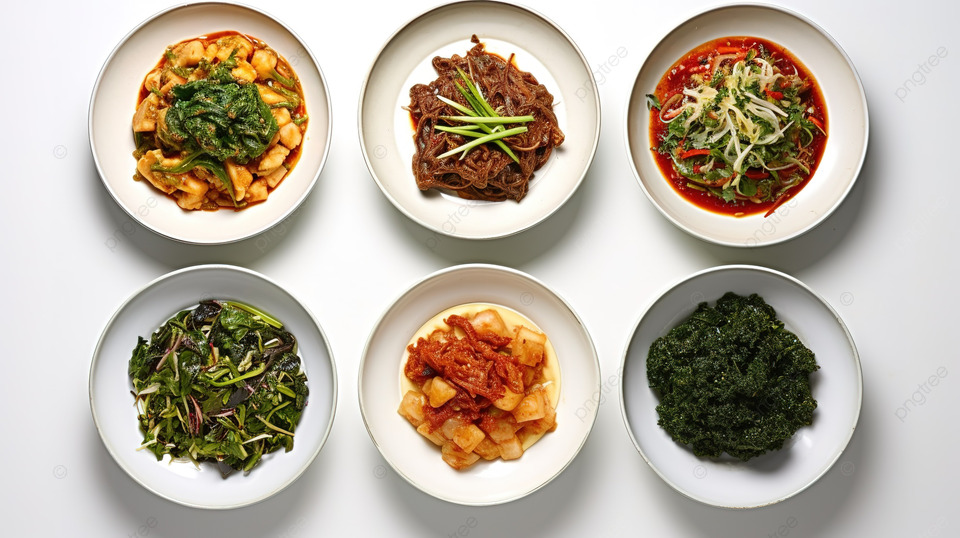
As spring unfolds in Korea, a vibrant array of fresh greens emerges, including popular choices such as gosari (fernbrake), minari (water celery), neutari beoseot (oyster mushrooms), and doraji (bellflower root). The Spring Greens Special is a meticulously crafted Korean course meal that spotlights gosari, minari, neutari beoseot, and doraji. Going beyond mere greens, this traditional Korean dining experience also features a variety of meat and fish side dishes. To truly relish the authentic Korean course meal, consider planning your visit to Korea between March and May.
3. Water parsley and pork belly (Minari samgyeopsal)
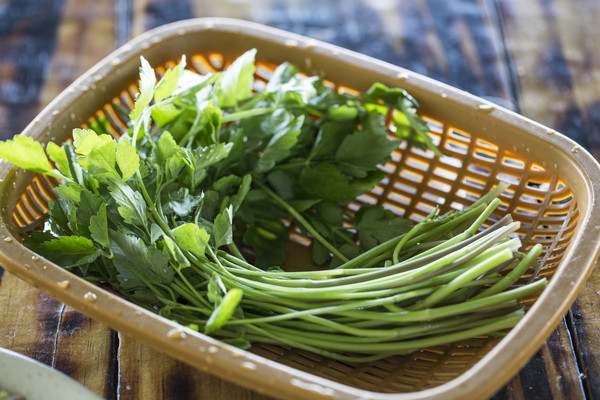
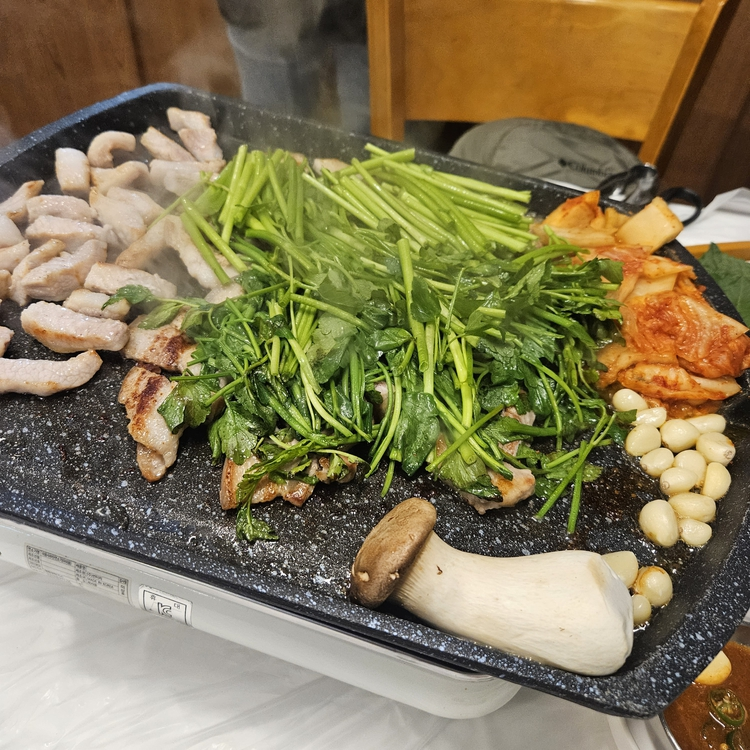
Minari Pork Belly contains the essence of spring with a pleasant combination of crunchy water parsley and succulent pork belly. The mild flavor of water parsley complements the richness of the meat, creating a refreshing and savory dish. It is a pairing that embodies the essence of spring dining even when it is slightly blanched or grilled.
In Korean cuisine, spring minari, known for its tender texture and subtle sweetness, is not limited to pork belly but is also a popular addition to broth-based dishes like octopus sashimi or shabu-shabu. Nevertheless, the combination of pork belly and minari remains a cherished favorite among Koreans. This pairing has gained immense popularity, leading to the establishment of restaurants specializing in Minari Pork Belly. (Stay tuned for restaurant recommendations below 😉)
4. Webfoot octopus (Jukkumi)
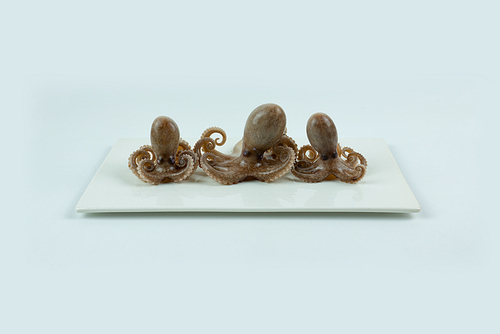
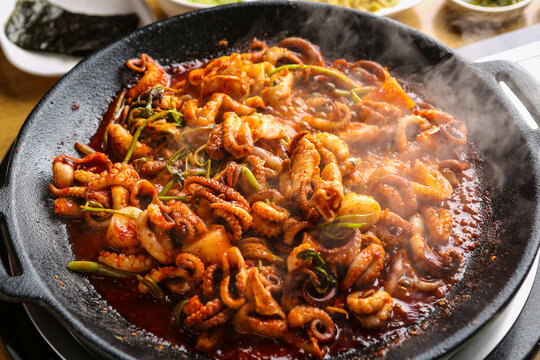
“Jukkumi Bokgeum” “Jukkumi Sookhoe” and “Jukkumi Shabu Shabu” showcase various ways to enjoy jukkumi, a delicacy abundant in spring. As the season arrives, jukkumi, a type of small octopus, is captured in its prime, its eggs brimming with flavor. With spring’s arrival in Korea, a multitude of dishes featuring jukkumi emerge. If you enjoy spicy flavors, we recommend trying “Jukkumi Bokgeum” while those fond of clear broth dishes may opt for “Jukkumi Shabu Shabu”. Especially popular among the younger crowd is dipping grilled jukkumi in cheese fondue, a delightful combination worth exploring! (Stay tuned for restaurant recommendations below 😉)
5. Grilled clams + Bajirak kalguksu
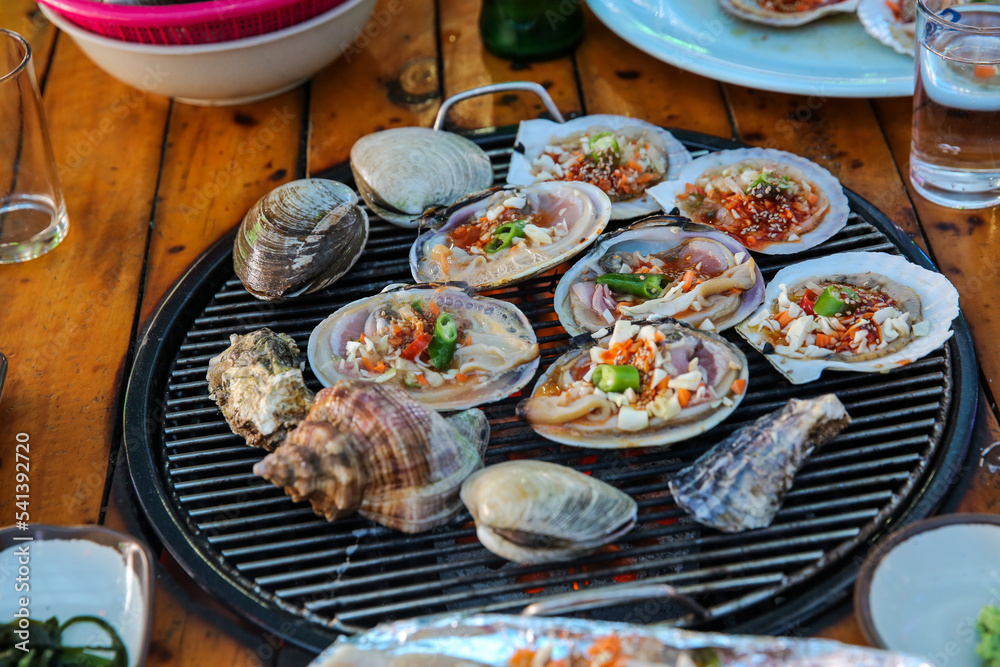
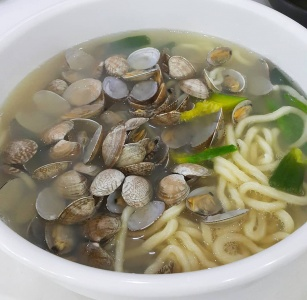
At the unique ‘Gatbeol’ (tideland) found exclusively in Korea, a variety of shellfish is harvested. Particularly in spring, the clams gathered from Gatbeol develop a delightful sweetness. While clam dishes can be enjoyed in Seoul, Koreans prefer savoring them near the seaside. Various types of clams such as cham-calm, dongjuk, garibi, pen shall, and oyster, embraced by the sea breeze, create special memories when enjoyed. The joy of grilling clams one by one, accompanied by soju, against the backdrop of the sea is an experience anyone would appreciate. If you plan to visit Korea’s seaside, I highly recommend trying this.
Additionally, after relishing grilled clams, Koreans often indulge in a serving of ‘Bajirak Kalguksu’ (clam knife-cut noodles) as a customary dessert. While considering noodles as dessert might seem unusual, it is a common concept among Koreans. The broth, generously filled with clams, exudes a clear and deep flavor, enhancing the richness of the knife-cut noodles immersed in it.
🌟 Spring Cuisine Restaurant recommendations
1. Yongmaru: Seasonal Spring Greens Set
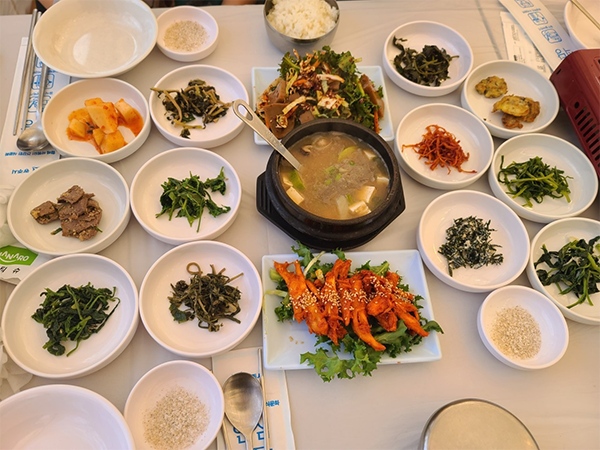
This restaurant is a local gem in Namhansanseong. Operated by the fourth daughter-in-law, who has inherited the culinary secrets from her mother-in-law, this establishment embodies the essence of Gyeonggi-do’s flavors, specializing in a distinctive yongmaru cuisine. The menu features a clean and refreshing soup made with kimchi crafted in-house each season, and intestines aged in crocks. Additionally, the incorporation of wild vegetables adds a unique touch to the overall flavor profile. Indulge in the exquisite taste of yongmaru and experience the culinary love passed down through generations. (You can only taste “seasonal spring greens set” in spring (April, May, and June), so I recommend you to visit then.)
🚩 Location
35, Namhansanseong-ro 780beon-gil, Namhansanseong-myeon, Gwangju, Gyeonggi-do (Go to Google map)
2. Na Jeong-soon grandmother’s Jjukkumi
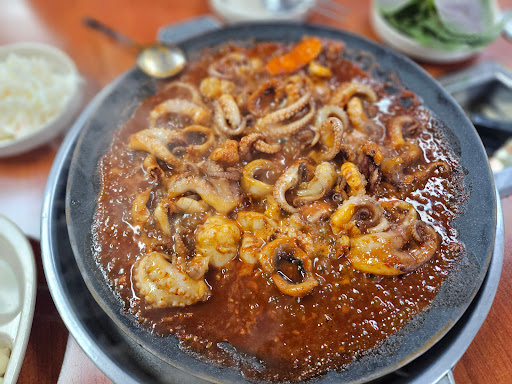
Explore the original alley of ‘Jjukkumi’ (small octopus) in the vibrant district of Yongdu-dong. This area is a haven for numerous Jjukkumi restaurants, and among them, ‘Na Jeongsoon Halmae Jjukkumi’ stands out as the most renowned.
Located in the heart of Yongdu-dong, ‘Na Jeongsoon Halmae Jjukkumi’ is celebrated as the epitome of authentic Jjukkumi cuisine. The alley itself is a hub for Jjukkumi enthusiasts, offering a variety of dining experiences. However, ‘Na Jeongsoon Halmae Jjukkumi’ stands as a culinary icon, beckoning visitors with its time-honored recipes and exceptional flavors.
Don’t forget to savor the final touch to your Jjukkumi feast – indulge in the delightful experience of our delectable fried rice! After relishing the unique flavors of Jjukkumi, treat yourself to a satisfying finale with our scrumptious fried rice, creating a memorable culinary journey.
🚩 Location
144, Muhak-ro, Dongdaemun-gu, Seoul (Go to Google map)
🔥Recommend🔥
Uniquely Enjoying Tteokbokki: Ways Koreans Delight in It (feat. Top 3 Tteokbokki Spots in Seoul)
– Tips for Enjoying Tteokbokki (Spicy Rice Cake Dish)
– Top 3 Tteokbokki Spots in Seoul
